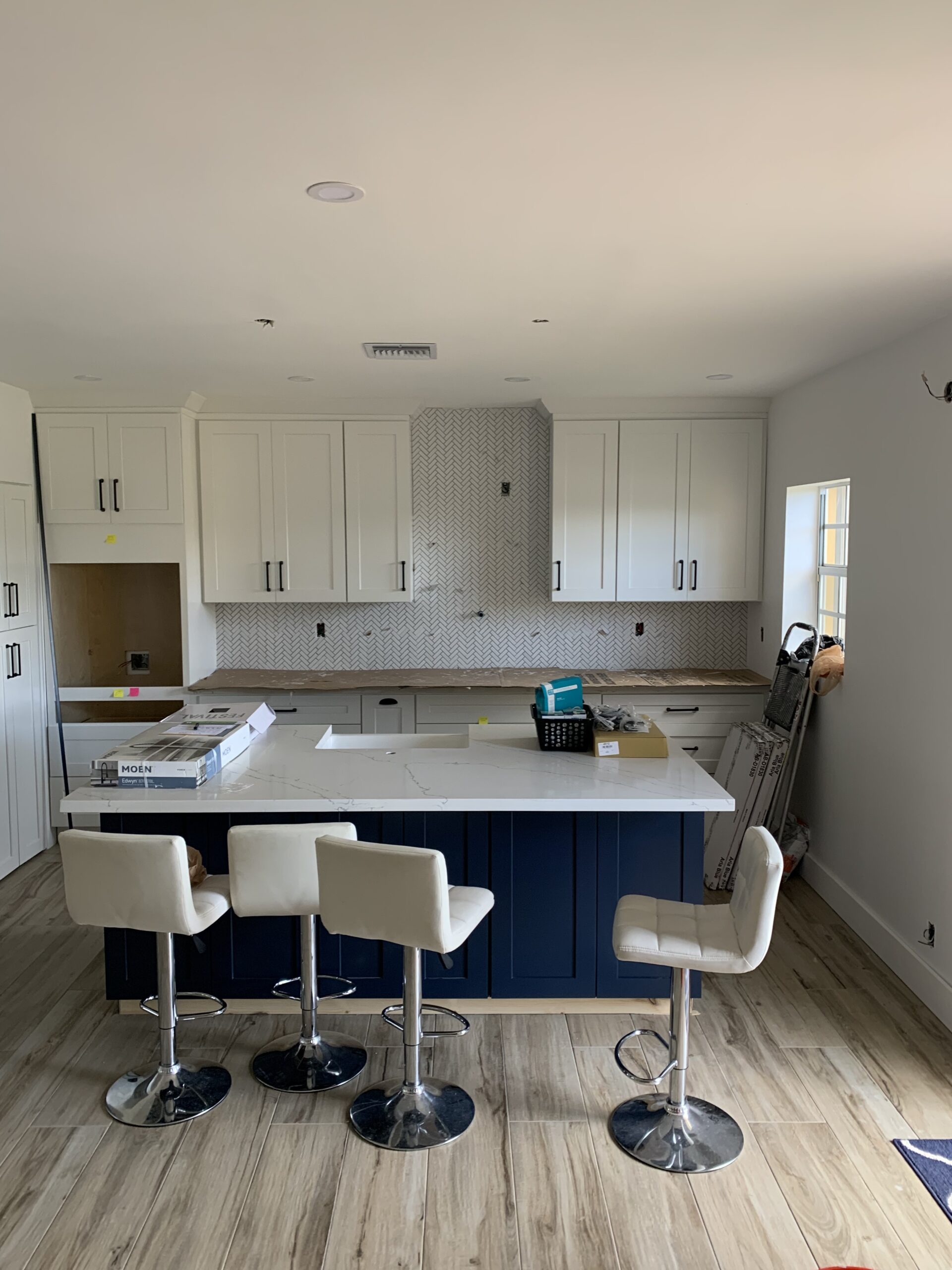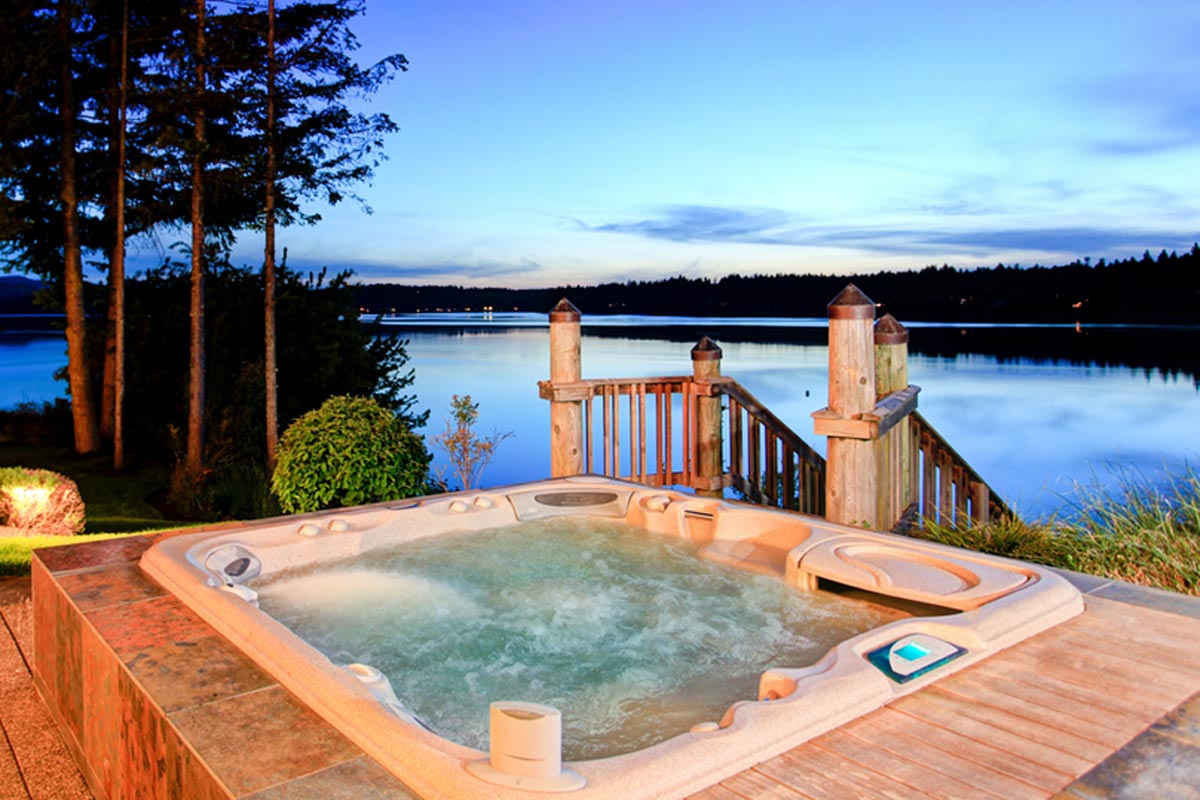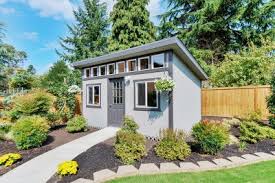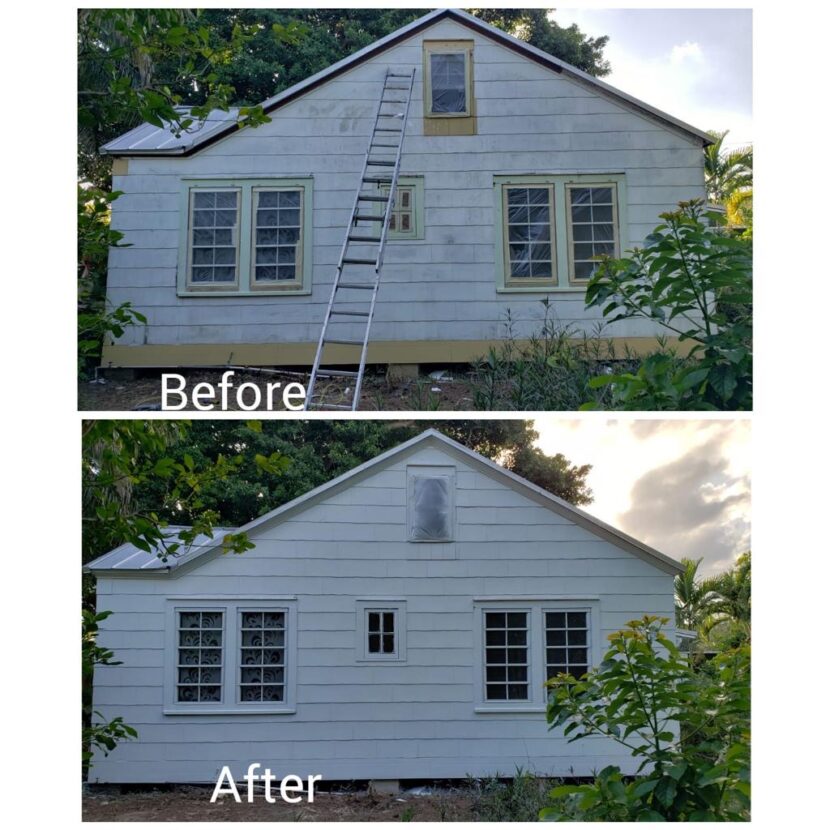The pandemic cast our homes in a whole new light and subsequently shifted which renovations increase home value. Our abodes are now places to relax and recharge one moment, work without commuting to the office the next, and “vacation” without leaving town when needed.
Kitchens and baths still matter to buyers, but now a home office and outdoor entertainment rival these spaces in importance. One-third of top agents in a survey ranked “the desire to make homes a sanctuary from the world” as the number-one reason for renovations in their market.
We’ve pulled together research from the National Association of Home Builders (NAHB), the National Association of the Remodeling Industry (NARI), and top insights from real estate agents so you can better prioritize your list of projects.
Does remodeling increase home value?
Remodeling can be a smart investment, but remember: there’s no guarantee you’ll make back the money you spend.
Last year’s average return on 22 popular remodeling projects came in at about 60% nationally, according to Remodeling magazine’s 34th annual Cost vs. Value report, an
assessment of several common household remodeling projects. That’s an average decrease of 3% across the board, down from 63.7% in 2020 and 66.1% in 2019.
“I can tell you that the average return on investment for updating or remodeling a home, you get back seventy-four cents for every dollar invested on average,” adds
Peter Clark, who ranks in the top 3% of 5,347 agents in the Portland, Oregon, area.
While you don’t want to have any renovation regrets by, say, installing hyper-specific fixtures and finishes, some projects now have a higher ROI because of buyer
demand and pandemic-related priorities.
Consider these renovations as ways to increase your home’s value:
1. Boost your curb appeal
Curb appeal always gives buyers an important first impression, but with many people staying home more often, it’s more vital than ever to telegraph that you care about your property — and that you’ve maintained it well.
You don’t have to invest a lot to reap the benefits, either. A recent survey of top real estate agents found that buyers will pay 7% more for a house with great curb appeal.
In fact, agents estimate that clients can yield an ROI of 238% for investing an average of $3,467 on curb appeal projects, including:
Attend to basic yard care (cut grass, weed control, fertilization)
Spread three cubic yards of bark mulch (including delivery)
Tidy the landscaping (shrubs, walkway, and flower beds)
Go beyond the greenery, and see even more potential added to your asking price. Fresh exterior paint adds an estimated 152% ROI, or about $7,600 in resale value, our
agents say. A new garage door has an estimated ROI of 133%, or about $2,800 in resale value.
Karin Provencher, a top real estate agent in Manchester, New Hampshire, says that new siding or trim often adds about 5% to 10% in value because it changes the look of
the house. Vertical board and batten siding, which costs an average of $10,811, adds a modern farmhouse look that’s especially striking with black trim.
Add some low-voltage wiring on the walkways and driveway, and “you could really capture a buyer’s heart,” she says.
2. Add livable square footage
Livable square footage often increases your appraised value. Yet under current conditions, buyers really want more of it. According to the NAHB’s regular survey, What Home Buyers Really Want, 2021 Edition, 21% of buyers said that the pandemic caused them to want larger homes. In fact, recent and prospective buyers said they wanted a
median of 2,022 finished square feet—about 8% more than they currently have.
If you have an unfinished basement of 400 to 1,500 square feet, adding flooring, drywall, and other touches to make it livable space has a potential ROI of 75% by converting it into a “specialty room” that more than 60% of buyers crave.
Imagine installing an outdoor fireplace (for about $3,000) or converting a porch to a four-season room by adding windows and a small electric stove or mini split-heating system. “You could add $30 to $50 a square foot. You’re creating real extra square footage,” Provencher says.
3. Add a double-sink bathroom vanity
Potential buyers want to know that, even if they’re home more often, their bathroom can handle those busy weekday mornings. Enter the double sink vanity, which our agents rank as the most desired bathroom upgrade for today’s buyers.
A double-sink vanity also defines personal space in the bathroom when things feel a little too close for comfort, Provencher says. It’s a psychological boundary that works well for families with children as well as adults.
Contact Remodeling Fort Lauderdale for suggestions like vanities or a kitchen island, which could increase your home value.

4. Install a kitchen island or walk-in pantry
Nowadays, it’s more common to have more than one person cooking at the same time — and people with different food prep and storage needs, according to NARI. Multiple sinks, various refrigeration options, flexible pantry and refrigerator space, and a convection microwave to heat meals between conference calls and video meetings all
have become desirable trends.
At the least, a double kitchen sink or a walk-in pantry rank high for 81% of buyers, the NAHB says. Among real estate agents, the top kitchen upgrades that buyers sought were:
A kitchen island (64%)
A walk-in pantry (62%)
Lots of drawer and cabinet storage (57%)
All provide extra counter space for gadgets, unloading groceries or takeout, and fixing food without bumping elbows. They also recoup a sizable chunk of installation.
One Real estate survey found that walk-in pantries alone yield 76% of their average $3,400 cost.
5. Build or convert a home office
If you’re not much of a cook, consider converting an existing walk-in pantry (or closet) into a home office. According to the NAHB, more than 70% of buyers interested in a home office or exercise room want it to be 100 square feet or larger, but in Provencher’s experience, just having that devoted space is a bonus.
“It definitely helps to edge out your competition,” she says. “I recently showed a condo that had a big walk-in pantry with their office in their pantry. They could keep the door open if needed, but it was a nice little private space on the first floor, where everything’s happening.”
She’s also seen homes where sellers have removed the clothing racks in a double closet and put in a tabletop and adjustable shelving for office space. This type of conversion fits well in a guest room but also is an efficient way to use the closet in a baby’s or toddler’s room, where a small dresser or wardrobe can handle the child’s clothing.
“The kids can be in a play space while you’re working, and at the end of the day, you can close it up and be done with it,” she says. “I’ve shown a few homes with it, and everybody is like, ‘Wow, this is so great.’”
The beauty of a home office is that it doesn’t have to look like a cubicle, either, NARI says. You can match your home’s decor and introduce natural surfaces and artistic pieces. For more appeal, be sure to find a way to add natural lighting (or at least softer lighting if you can’t access a window), not the fluorescent bulbs in a standard office building.
A hot tub, which could increase home value.

6. Expand your outdoor space
Buyers often appreciate functional outdoor space, but this feature now has even higher appeal. One survey of 2,000 homeowners found that participants spent 14 hours a week outside, or three hours more than before the pandemic. In addition, 7 out of 10 said adding to their home’s exterior spaces had become a new hobby, and 73% said
being outside was “therapeutic.”
Touch up your garden or hardscaping, then consider incorporating any of these sought-after features:
A pool
Sales of residential in-ground pools jumped during the summer of 2020 because of COVID-19 restrictions, with one installer, Pools of Fun in Indianapolis, reporting a 43% increase. The average cost to install an inground pool is about $42,000, but the value it adds has increased an estimated 69% to nearly $30,000 since COVID-19
began, our agents say.
In New Hampshire, where residents can use the pool for perhaps three months, a “pool person” will pay anywhere from $10,000 to $25,000 more for an inground pool,
Provencher says.
A deck
Decks gained greater popularity during the pandemic, with one study from Principia Consulting reporting that 31% of homeowners built a new deck in 2020 where none previously existed, up from 25% a year earlier.
While costs vary based on materials and size, you could recoup about 97% of your costs if you spend about $7,230, roughly the median price. In the Pacific region, decks have become worth about 76% more since the pandemic, with an estimated increase in value from $5,296 to $9,296, our research shows.
A hot tub
An in-ground hot tub gives your backyard the feel of a high-end spa (and pairs well with an in-ground pool). Our agents say the value of an in-ground hot tub has grown about 71% nationwide, with the biggest draw in the Midwest, increasing from $1,890 to $3,899.
Although you’re unlikely to recoup your entire installation cost at a range of $8,000 to $25,000, you currently stand to recover about 42%–a significant increase from the 25% you’d have recouped before the pandemic.
If you’re shy about breaking ground, a freestanding hot tub isn’t a bad compromise. While freestanding hot tubs aren’t factored into a home’s overall value (appraisers consider these personal property), your agent can discuss a buyer paying for this separately.
A freestanding hot tub that costs from $2,000 to $8,000 can fetch roughly $800 more during your home sale than what someone would have paid before the pandemic. Buyers in the Northeast, South Central, Mountain, and Pacific regions are willing to pay upwards of $2,000 for it.
An outdoor kitchen
An outdoor kitchen that goes beyond the grill with features such as cabinets, countertops, a bar, and a small sink or fridge enhances the luxury and charm of outdoor dining and entertaining. Our agents say buyers particularly like a combo with a grill, sink, fridge, and bar center (46%) as well as a retractable awning or canopy for
shade (34%).
The overall value for outdoor kitchens has increased 58% nationwide, from about $6,156 to $9,751, with buyers paying the most in the Pacific and the Northeast.
You can adjust your outdoor kitchen to suit your space and your home’s price range, too. Even a grill, a water source, and a pizza oven create the feel of a special outdoor “room,” according to RemodelingFortLauderdale.com.
A small setup (perhaps about $5,500) with just a grill and counter space can add $10,000 to $30,000 if it’s a defined space not too far off the house and usable year-round, Provencher says.
NARI recommends choosing natural materials such as brick, wood, and stone to “radiate a chic, outdoorsy vibe.” Opt for a simple “L” layout, or create visual interest with curved walls and cozy seating.
An outdoor fireplace or fire pit
An outdoor fireplace or fire pit is a prime spot for setting up a screen for outdoor movies, having friends and family over for a game night, or just keeping the conversation going after the sun sets. In fact, 76.8% of our agents say that a fire pit with a bench or a couch is the top backyard entertainment feature nationwide.
Installing either as a focal point varies in cost because of materials and size. An in-ground fire pit on average costs $700 while an outdoor fireplace runs anywhere from $1,500 to $20,000.
While you’ll want to check with your city or county fire department, as well as your homeowners’ association, about any restrictions on fire pits or outdoor fireplaces, these features can heighten your home’s marketability in certain regions. Our agents note fire pits are a huge draw in the Northeast (69%) and in the Midwest (59%).
Add a walking surface of flagstones, pavers, or brick for a soft boundary that tells guests they’re heading to a special spot, NARI suggests. You also can make this area more private with a fence or hedges, about 48% of our agents say.
Create some ambiance with lanterns, string lights, or recessed lights, and add a couple of throws, and you’re ready to curl up in comfort.
An ADU, which could increase home value.

7. Build a backyard ADU or in-law suite
An accessory dwelling unit (ADU) is an innovative and affordable housing solution in high-cost areas, plus a way to house extended family or add rental income to your property.
One-third of real estate agents surveyed for the End of Year 2021 report saw an increase in ADUs in their markets. In addition, 38% said the value of homes with this feature had grown during the pandemic, from $47,597 to $65,908.
“Multigenerational living is a huge value-add,” Provencher says, boosting the typical home value in her area by about 20% to 25%.
Even people who don’t plan to use an ADU as housing love the space as a home office suite, she says, mirroring 41% of real estate agents who noted this use among homeowners.
If you’re interested in an ADU as a guest house (43%) or as a rental unit (38%), our agents recommend these design elements to increase its value and appeal:
Durable flooring, such as waterproof laminate (55%)
Natural light, such as through clerestory windows, skylights, or French doors (53%)
Name-brand appliances and granite countertops (47%)
NARI adds considering universal design features as well, especially for older relatives or those interested in aging in place. These can include blending ramps into the flow of the landscape.
8. Make your mudroom bigger and more functional
A mudroom or foyer with a place to drop off the day’s gear has long been a home design perk, especially in areas where corralling wintery shoes and boots is a must.
In-demand features include a laundry area, a central charging station for everyone’s phones, and shelving or other specified storage for each family member, according to Remodeling Fort Lauderdale experts. Opt for recessed LED lighting and waterproof luxury floor tiles that are easy to clean to keep the area tidy.
Even adding a bench, hooks, and built-in cubbies to a small foyer entry creates this natural stopping point and a perceived value-add, Provencher says. “They want that drop zone.”
Renovations are on the rise, so invest wisely One Bank of America poll found that more than 70% of Americans tackled home improvement projects during the COVID-19 pandemic, with millennials spending the most.
Keeping pace with what buyers like and what can increase your resale value can help you decide where to focus your efforts. Talk with a local real estate agent about which renovations increase home value in your area, then see which ones can help you enjoy your space the most until you’re ready to hit the market.

